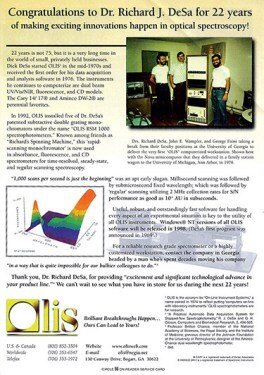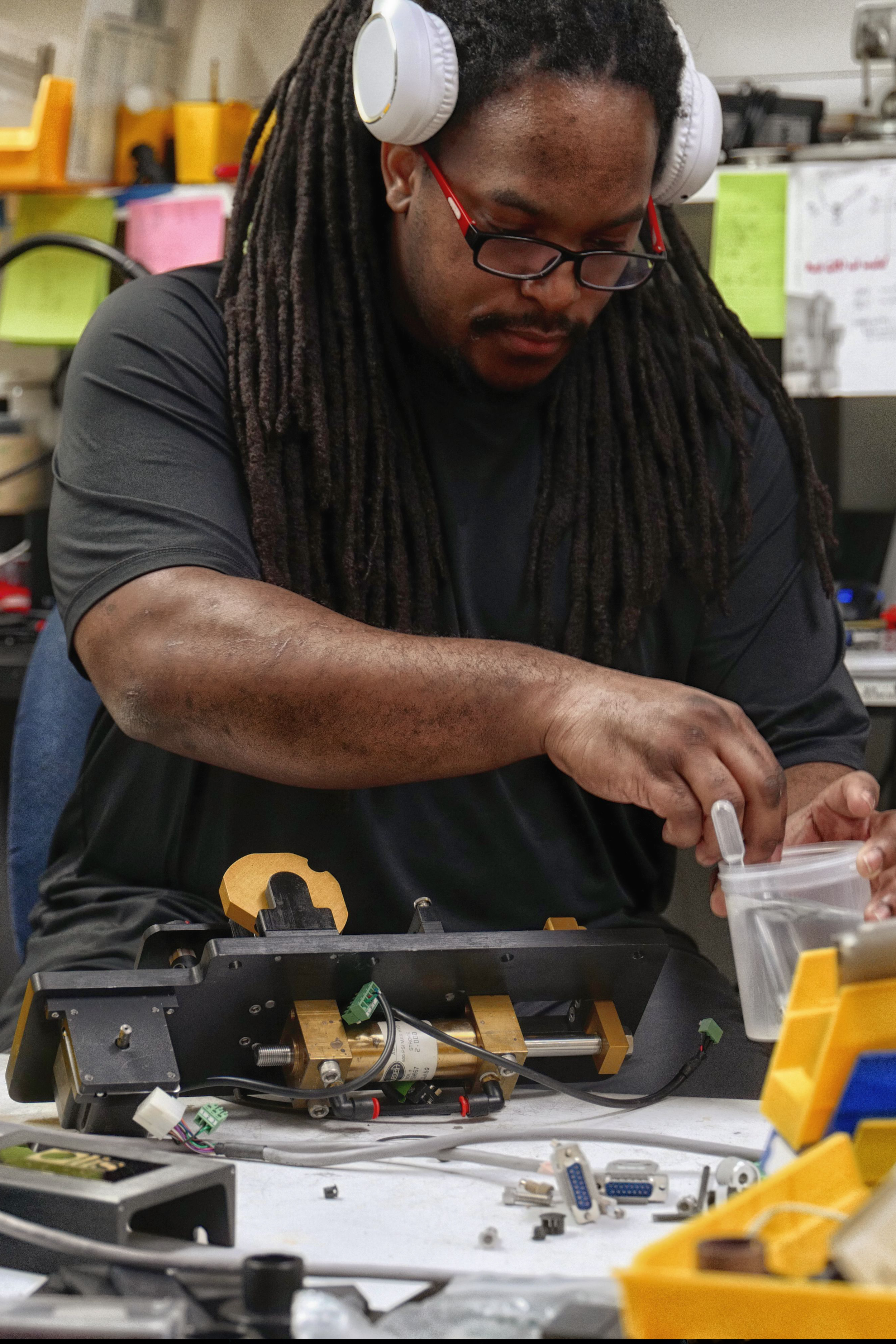How Uv/vis can Save You Time, Stress, and Money.
How Uv/vis can Save You Time, Stress, and Money.
Blog Article
Getting My Circular Dichroism To Work
Table of ContentsThe Best Guide To Uv/visMore About Circular DichroismA Biased View of Circular DichroismThe Main Principles Of Circular Dichroism All about Uv/vis/nir

Spectrophotometry is a tool that hinges on the quantitative analysis of molecules depending on how much light is absorbed by colored substances.
The Greatest Guide To Spectrophotometers
A spectrophotometer is commonly utilized for the measurement of transmittance or reflectance of options, transparent or nontransparent solids, such as refined glass, or gases. Although numerous biochemicals are colored, as in, they absorb noticeable light and for that reason can be determined by colorimetric treatments, even colorless biochemicals can frequently be transformed to colored compounds appropriate for chromogenic color-forming responses to yield substances ideal for colorimetric analysis.: 65 However, they can likewise be developed to measure the diffusivity on any of the noted light ranges that usually cover around 2002500 nm utilizing different controls and calibrations.
An example of an experiment in which spectrophotometry is used is the decision of the balance constant of a solution. A particular chemical response within a solution might take place in a forward and reverse direction, where reactants form items and items break down into reactants. Eventually, this chemical reaction will reach a point of balance called a stability point.
The Basic Principles Of Spectrophotometers
The amount of light that passes through the option is indicative of the concentration of certain chemicals that do not permit light to pass through. The absorption of light is because of the interaction of light with the electronic and vibrational modes of molecules. Each kind of molecule has a specific set of energy levels connected with the makeup of its chemical bonds and nuclei and therefore will absorb light of particular wavelengths, or energies, resulting in special spectral homes.
Making use of spectrophotometers covers numerous scientific fields, such as physics, products science, chemistry, biochemistry. UV/Vis/NIR, chemical engineering, and molecular biology. They are widely utilized in lots of industries consisting of semiconductors, laser and optical production, printing and forensic evaluation, along with in labs for the research study of chemical substances. Spectrophotometry is frequently utilized in measurements of enzyme activities, decisions of protein concentrations, determinations of enzymatic kinetic constants, and measurements of ligand binding reactions.: 65 Ultimately, a spectrophotometer has the ability to figure out, depending on the control or calibration, what substances exist in a target and precisely just how much through calculations of observed wavelengths.
This would come as a service to the previously produced spectrophotometers which were unable to absorb the ultraviolet correctly.
Spectrophotometers - Truths
It would be found that this did not offer satisfying results, for that reason in Model B, there was a shift from a glass to a quartz prism which permitted for better absorbance results - UV/Vis/NIR (https://pagespeed.web.dev/analysis/https-olisclarity-com/ft59obxjpp?form_factor=mobile). From there, Model C was born with an adjustment to the wavelength resolution which wound up having 3 units of important source it produced
It irradiates the sample with polychromatic light which the sample takes in depending upon its properties. It is sent back by grating the photodiode range which spots the wavelength area of the spectrum. Ever since, the production and application of spectrophotometry gadgets has increased immensely and has turned into one of the most ingenious instruments of our time.

The 9-Minute Rule for Circularly Polarized Luminescence
The grating can either be movable or fixed.
In such systems, the grating is fixed and the intensity of each wavelength of light is measured by a different detector in the range. When making transmission measurements, the spectrophotometer quantitatively compares the fraction of light that passes through a recommendation solution and a test solution, then electronically compares the intensities of the 2 signals and calculates the portion of transmission of the sample compared to the recommendation standard.

Report this page